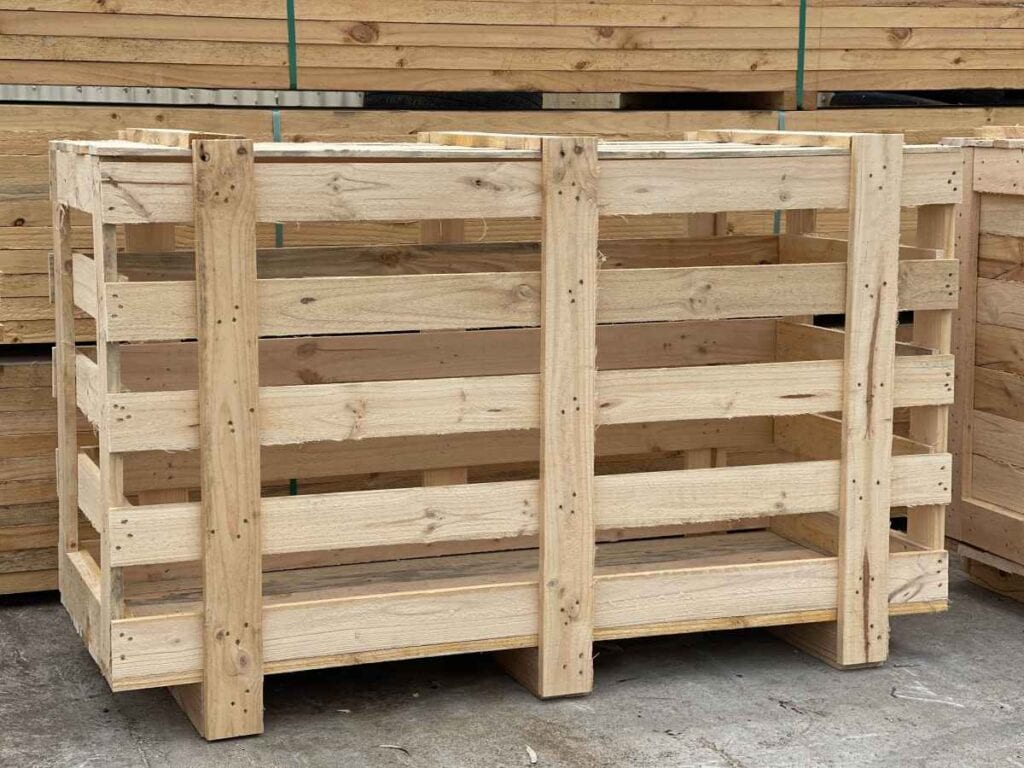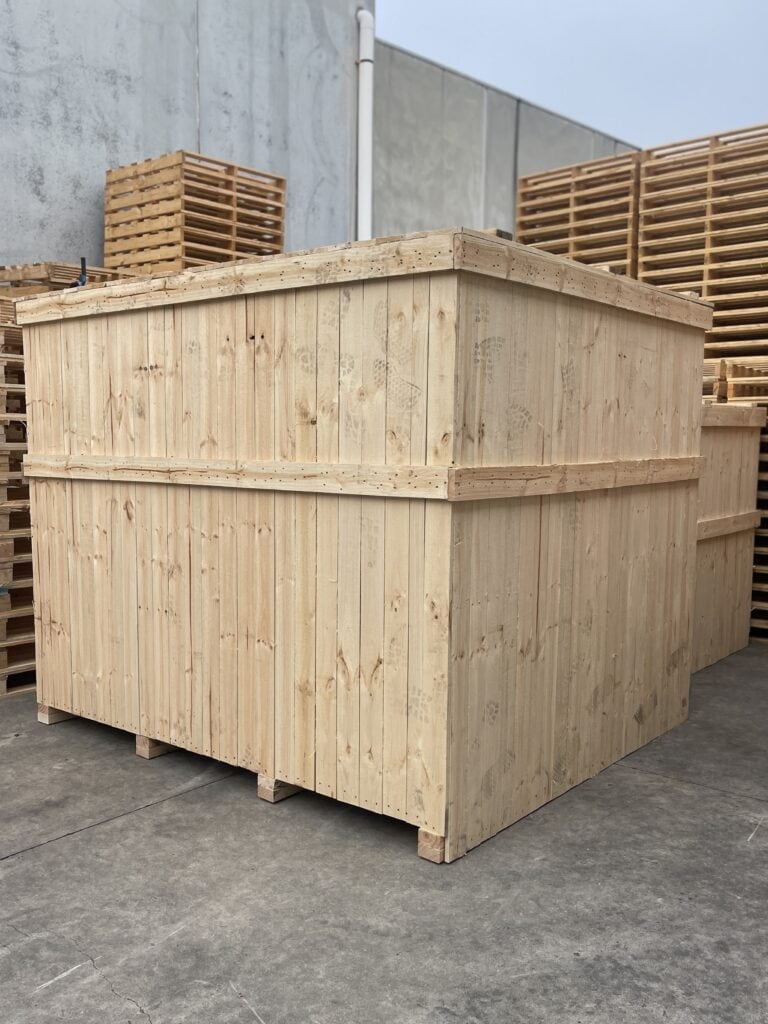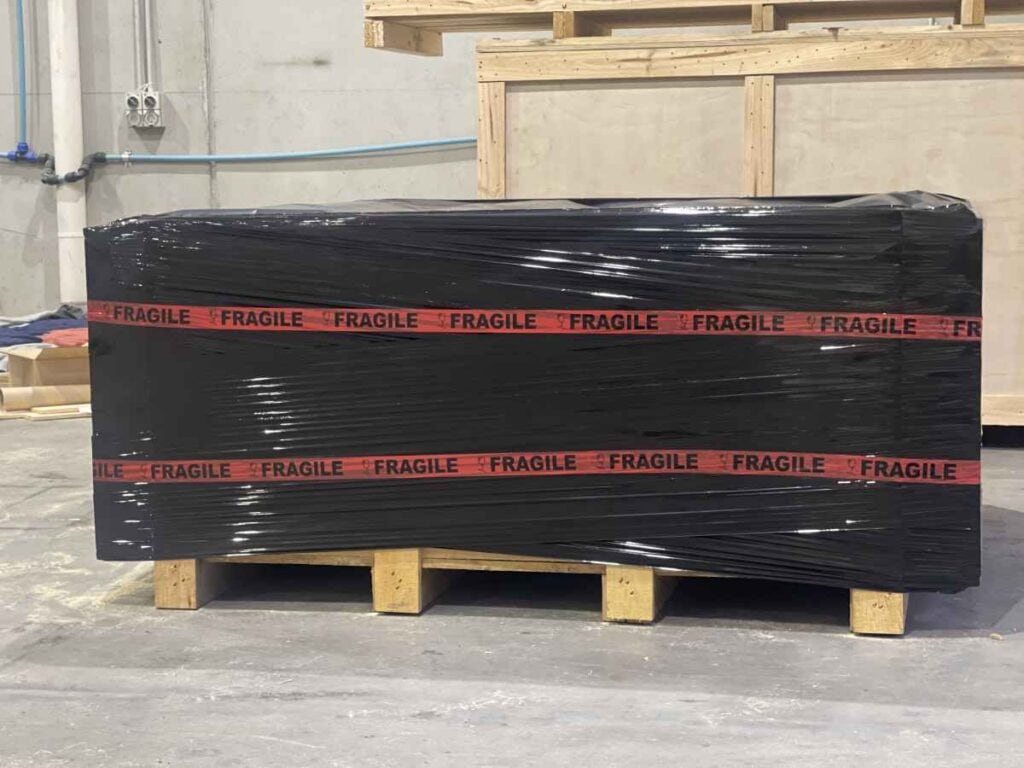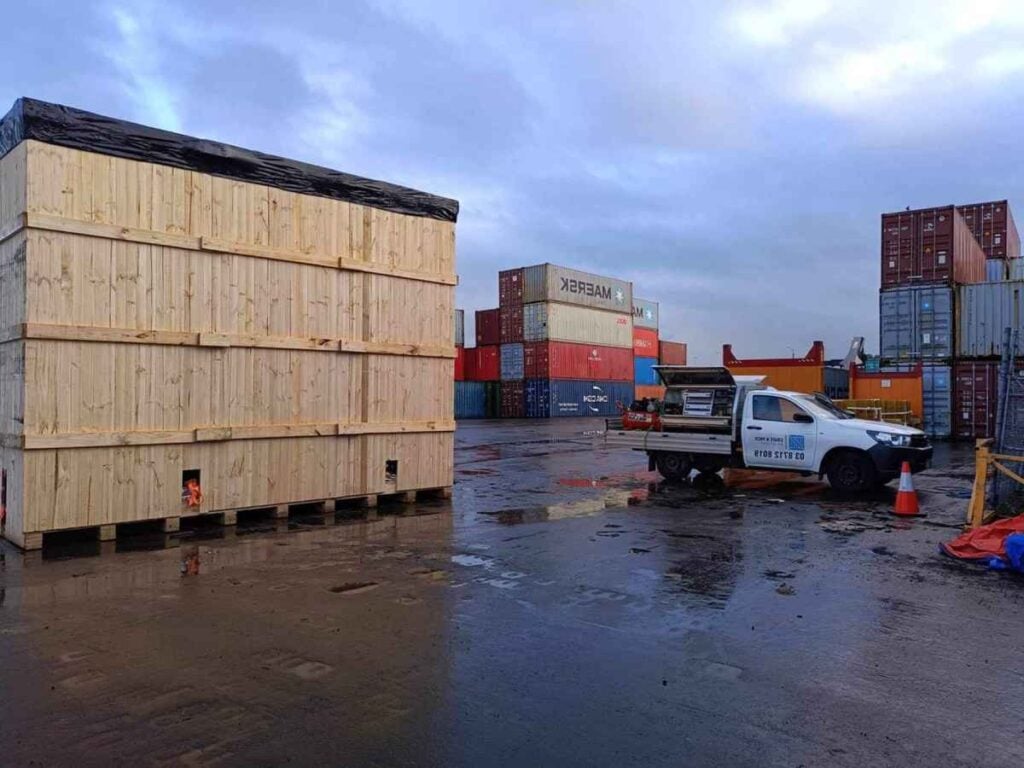When it comes to packing, protection and efficacy are the two most important factors to consider. Shrink film is a multipurpose and indispensable material that has completely altered the way we store and transport things.
This guide will take you through all you need to know about shrink film for packing, whether you're a business owner trying to optimise your packaging process or just curious about this creative solution.
To better your packaging skills and knowledge, we will reveal the mysteries of shrink film, from its fundamentals and applications to its effects on the environment and advantages. Come with us to explore various types of shrink film and see how it may improve your packing techniques.
What Is Shrink Film And How Does It Work?
Shrink wrap, shrink film, and shrink wrap are all names for the same substance, a flexible polymer used to package items. When heated, the film contracts tightly around whatever is inside it.
This can be accomplished with a conveyor heat tunnel or a heat gun powered by electricity or gas. This method creates a transparent and long-lasting shield around the product.
So, how does this happen? Shrink wrapping is a scientific discipline that can be broken down into molecular components. The molecules that make up a sheet or tube of shrink film are randomly interwoven, which means that they are coiled and twisted in no particular order.
When the film is heated, the disordered parts of the chains align themselves with the film's orientation.
In other words, the molecules rearrange themselves from their chaotic initial orientation to conform to the shape of their respective containers. The film's molecular features are locked in once it has cooled, so it will remain in its stretched state until it is heated enough for the molecule chains to contract back to their original shape.
The Different Types Of Shrink Film
Shrink films, commonly known as shrink wrap, are made from a polymer that, when heated, contracts to encase whatever it is covering tightly. They provide great protection against dust, moisture, and manipulation. Hence, they see widespread application in the packing of many different goods. Here, we'll explore the diverse types of shrink films available.
1. PVC Shrink Film
Polyvinyl chloride shrink wrap, or PVC shrink wrap, was once the undisputed king of global packaging due to its low cost and wide range of applications. It found use in retail for things like non-food packaging, video game cases, software boxes, and DVD and CD jewel cases.
Although PVC shrink wrap has excellent rip resistance, it often becomes brittle after shrinking, rendering it unsuitable for wrapping many objects or usage in extremely cold or hot environments. Although it was crucial in the development of packaging, newer materials have emerged that are better able to meet the demands of modern packaging.
2. Polyolefin Shrink Film
Polyolefin shrink film is the best option because it is long-lasting and adaptable. It is safer than PVC and is used in many places where PVC was formerly used. Materials made from POF might vary in their characteristics.
Cross-linked film is a viable alternative for high-speed packaging because of its excellent tensile strength and crystal-clear appearance. Using cross-linked film can also keep your machine's sealed components clean.
Rolls of film that are longer and thinner can be made because of the reinforcement provided by POF. This improves effectiveness and production by decreasing the frequency of roll changes. POF shrink film's high sealing strength and low susceptibility to puncturing facilitate the protection of oddly shaped goods.
Toys, games, candies, books, food, the majority of retail products, and anything else where presentation is key frequently make use of POF shrink film. If we claim it's adaptable, we mean it! The barrier layer in this packaging film can be tailored to your needs by mixing and matching various additives.
3. Polyethylene Shrink Film
Polythene is a type of polyolefin, which indicates that it is a single-monomer film generated during the polymerisation process by adding ethylene.
A wide variety of flexible protective packaging, such as shrink films and stretch films, both of which behave extremely differently from one another, make use of PE as an ingredient. High-density polythene, low-density polythene, and linear low-density polythene are the three most common types of PE.
Higher gauge PE can be as thick as 1200 gauge, whereas POF and PVC are normally only available in thicknesses up to 100 gauge. Ships are shrink-wrapped to these thicknesses for storage and other purposes in the maritime sector.
Low shrinkage (usually around 20%) and considerably diminished clarity are two of PE shrink's major drawbacks.
Styles Of Shrink Film
Shrink wrap, as we now know, may be made from various materials, each with its advantages. In addition to the types mentioned above, the following are also available in shrink film:
Rolls Of Shrink Film
Folding the shrink wrap in half lengthwise creates a centrefold, which can then be rolled onto a dispenser. They are commonly used in retail packaging because they make it easy to slip products into the pocket and seal them using an L-bar sealer.
These rolls can be used with automatic or manually operated packaging machines, and they are large enough to fit even the bulkiest objects. This popular option in retail settings improves the presentation and protection of products, keeping them safe and looking good while they sit on store shelves. Retailers frequently turn to centrefold shrink wrap rolls because they are convenient and produce high-quality packaging.
Tube-Style Shrink Film
Shrink tubing is a novel approach to shrink film that allows for the production of shrink bags of any desired length by virtue of its two pre-sealed sides that facilitate product insertion. Its high-gloss, crystal-clear film is perfect for highlighting products' best features.
Shrink tubing stands out because of its adaptability; it may be used with hand-held or automated packaging machines to meet various business requirements. Shrink tubing is an indispensable tool for companies that want to step up their packaging game and improve the presentation of their products since it is a versatile option that enables businesses to professionally and efficiently package their items while also providing the flexibility to suit a variety of item sizes.
What Advantages Does Shrink Film Provide?
There are various benefits to using shrink wrap film for your packaging needs. It's the best bet for various products and uses thanks to its adaptability, durability, recyclable nature, and aesthetic qualities.
The following is a list of some of the most significant advantages:
Presentation
Polyolefin shrink film is highly adaptable and may be modified to meet your packaging requirements. It can be made in various forms, including those with anti-fog and moisture vapour transfer rate barriers that are ideal for packing perishables like meats and frozen items to retain their full flavour and nutritional value.
In addition, polyolefin shrink film gives products a glossy appearance, which boosts their visual attractiveness and makes them more noticeable when displayed on store shelves. Increase your brand's visibility in stores by printing high-quality graphics on these films. Polyolefin films provide a blank slate for eye-catching designs and instructive labelling, making them a top choice for companies searching for high-quality packaging that meets consumer expectations for aesthetics and practicality.
Cost Reduction
Because of the robustness and longevity of shrink film, many companies have replaced corrugated packaging with it for their multi-pack items. The use of a corrugated tray is unnecessary when shrink wrapping heavy objects. A polybag is an ideal packaging option for lightweight foods (such as single-serve chips). This helps you save money on packaging materials and reduces the floor and shelf space your products take up in your warehouse.
By down-gauging or opting for a narrower film, you can further optimise your packaging for cost reduction in an era when new technologies are becoming accessible almost daily. A film audit of your packaging line, conducted in collaboration with a packaging expert, will reveal the various possibilities open to you.
Protection
Shrink film's long shelf life and resistance to punctures make it an excellent protective layer for your goods during shipping and handling. When it comes to protecting fragile or breakable products, cross-linked films shine. High resistance to tearing and puncturing is an intrinsic property of these materials, reducing the likelihood that products may be damaged in transport.
Furthermore, cross-linked shrink films are important in lowering tampering worries, which in turn improves product safety and integrity. These films save money and time for organisations that package in bulk and use automatic or semi-automatic wrapping machines because they reduce the likelihood of product damage and the amount of packaging material used.
Additionally, shrink film helps lengthen the shelf life of perishable commodities, which is an important consideration in the food business. In addition to protecting the product, it masks any odours that might be released during packaging. Shrink film is a vital tool for enterprises of all kinds because of its duration and adaptability, which guarantee product quality, security, and lifespan.
Sustainability
The fact that shrink films are made of polyolefin (POF) and polythene (PE) both have the ability to be recycled, which is a feature that is becoming increasingly important as society places a greater emphasis on being environmentally responsible. In response to shifting customer preferences and worldwide environmental concerns, businesses of all sizes are making the switch to eco-friendly packaging solutions.
POF shrink film stands out from the crowd because, unlike PVC shrink film, it does not release any toxic vapours during the heat-sealing process. This attribute is consistent with eco-friendly practices since it reduces or eliminates the need to release potentially hazardous compounds into the air, making for a safer and healthier workplace. Because of their recyclability and low environmental effect, POF and PE shrink films are excellent options for sustainable packaging in today's eco-conscious society.
Customisation
Shrink film's adaptability makes it possible for companies to add their touches to their packaging in the form of labels, logos, and eye-catching visuals. This capacity extends beyond simple product safety by providing a blank slate for developing a brand identity that stands out in the marketplace. Companies may make their shrink-wrapped goods become visible representatives of their brand by adding their logos, product information, and eye-catching pictures on the packaging.
This unique touch not only adds an extra layer of security to products but also promotes brand awareness and loyalty. When customers see these well-crafted packages on shop shelves or in their online orders, they form a deeper relationship with the brand, which in turn reinforces their commitment and faith in the company. In today's cutthroat business environment, customisation using shrink film becomes a potent weapon for standing out from the crowd.
Environmental Considerations
The choice of shrink film is more important in today's environmentally concerned setting. Only some shrink films are indeed eco-friendly, but several solutions are available that are both recyclable and biodegradable, so sustainability is optional for convenience.
Choosing environmentally friendly shrink films can significantly decrease the negative effects of packing on the environment. Recyclable materials like shrink films can be reclaimed and reused to save space in landfills and save scarce materials. However, biodegradable materials decompose over time without further input from humans, reducing environmental impact.
Businesses can demonstrate their commitment to sustainability by picking these responsible alternatives to shrink film. This not only resounds well with environmentally conscious customers but also helps contribute to a healthier planet. It's a decision that's easy to overlook but one that may have a significant, beneficial effect on the company's reputation and the world around it.
Conclusion
The way we store and move things has changed a lot because of how useful and flexible shrink film is. It is made of a bendable polymer that tightens up when heated, making a clear shield around the product that lasts for a long time. Molecules play a role in this process. The molecules in a sheet or tube are loosely woven together. When heated, the parts that are out of place line up with the direction of the film, making a clear, long-lasting screen.
There are many different kinds of shrink film, such as PVC, Polyolefin, and Polythene. PVC shrink wrap was used to rule the world of packaging because it was cheap and could be used for a lot of different things. But after it shrinks, it often gets weak, so it can't be used in very cold or very hot places. Polyolefin is durable and flexible, so it can be used for many things like toys, games, candies, books, food, and other store items. By adding ethylene to the polymerisation process, a single-monomer film called polythene is made. This film is used to make flexible protective packaging like shrink films and stretch films.
Different kinds of materials can be used to make shrink wrap, and each has its own pros. Rolls of shrink film, like centrefolds, are often used in retail packing because they are easy to use and make for good packaging. These rolls can be used with either automatic or manually operated packaging machines to make sure that products look good and stay safe while they are on shop shelves.
Shrink tube is a new way to use shrink film. It has two sides that are already sealed, so it can be used to make shrink bags of any length. This high-gloss, crystal-clear film is great for showing off the best parts of a product. It can be used with hand-held or automatic packaging tools to meet different business needs. There are many good things about shrink wrap film, such as its adaptability, sturdiness, ability to be recycled, and good looks.
Polyolefin shrink film is very flexible and can be changed to meet packing needs, such as anti-fog and moisture vapour transfer rate barriers for perishable items like meats and frozen foods. It also makes the product look shiny, which makes the product and company more visible.
Shrink film saves money because it replaces corrugated packaging for items that come in multiple packs and takes up less room on the floor and on shelves in warehouses. It also protects the product because cross-linked films are hard to tear or cut. This makes it less likely that the product will get damaged while being shipped.
The fact that shrink film is made of polyolefin (POF) and polythene (PE), both of which can be recovered, is another benefit. POF shrink film stands out because it doesn't give off harmful fumes when it's heated. This makes it an eco-friendly choice.
With shrink film, companies can add names, logos, and other eye-catching designs to make their products stand out and get people to remember them. In today's environmentally aware world, choosing shrink films that are better for the environment can make a big difference in how bad packing is for the environment. Businesses can show they care about the environment and contribute to a healthier world by choosing alternatives to shrink film that are more responsible.
Content Summary
- Shrink film is a versatile material revolutionising the way we store and transport goods.
- This guide explores everything from the basics of shrink film to its environmental impact.
- Also known as shrink wrap, this flexible polymer tightens around items when heated.
- Heating can be achieved using a conveyor heat tunnel or an electric or gas-powered heat gun.
- The science behind shrink film involves the reorientation of molecular chains when heated.
- Once cooled, the film remains in its constricted state until reheated.
- Shrink films offer excellent protection against dust, moisture, and manipulation.
- PVC shrink film was once dominant due to its low cost and wide applicability.
- However, PVC can become brittle after shrinking and isn't suited for extreme temperatures.
- Polyolefin shrink film is a safer and more versatile alternative to PVC.
- Cross-linked polyolefin films are ideal for high-speed packaging due to their high tensile strength.
- Polyolefin films also reduce the frequency of roll changes, increasing production efficiency.
- They are frequently used in the packaging of toys, games, books, and food.
- Polyethylene shrink film comes in multiple densities and is used in marine and other sectors.
- However, polyethylene films usually have low clarity and limited shrinkage capabilities.
- Shrink films come in different styles, such as rolls and tube-style.
- Centrefold shrink rolls are common in retail settings for their ease of use.
- Tube-style shrink film allows for the creation of custom-length shrink bags.
- Shrink films offer various benefits, including adaptability, durability, and aesthetic appeal.
- Polyolefin films can feature anti-fog and moisture barriers, making them ideal for perishables.
- Shrink films offer a glossy appearance, enhancing product visibility on store shelves.
- High-quality graphics can be printed on polyolefin films to increase brand visibility.
- Shrink film can replace corrugated packaging for multi-pack items, reducing costs.
- Down-gauging or opting for narrower films can lead to further cost reduction.
- Shrink film offers robust protection during shipping and handling.
- Cross-linked films are particularly resistant to tears and punctures.
- These films also reduce concerns about tampering, improving product safety.
- Shrink films extend the shelf life of perishable items, which is crucial in the food industry.
- They also help contain any odours released during packaging.
- Polyolefin and polyethylene films are recyclable, making them eco-friendly options.
- Unlike PVC, polyolefin films don't release toxic fumes during sealing.
- Businesses are increasingly switching to eco-friendly shrink films due to consumer demand.
- Shrink films offer customisation options such as labels, logos, and visuals.
- Customised shrink film packages can enhance brand loyalty and awareness.
- Environmental considerations are becoming increasingly important in the choice of shrink film.
- While not all shrink films are eco-friendly, many recyclable and biodegradable options exist.
- Opting for environmentally responsible shrink films can reduce landfill waste.
- Biodegradable films decompose naturally, further minimising environmental impact.
- Choosing sustainable shrink films can enhance a company's reputation.
- The guide suggests collaborating with a packaging expert for a film audit to explore options.
- Shrink film's low susceptibility to puncturing makes it ideal for oddly shaped goods.
- Longer and thinner rolls of film can be made due to the reinforcement offered by polyolefin.
- Shrink film is increasingly used in place of corrugated trays for heavy objects.
- Polybags are becoming the go-to option for lightweight food items like single-serve chips.
- The aesthetic qualities of shrink film meet consumer expectations for both practicality and looks.
- Customisation of shrink film serves as a potent weapon in today's competitive business environment.
- Cross-linked shrink films are particularly useful for bulk packaging.
- The choice of shrink film can have a significant effect on a company’s environmental footprint.
- Shrink tubing is ideal for businesses looking to package items of various sizes efficiently.
- Polyethylene shrink films are used extensively in the maritime sector for storing and protecting ships.
Frequently Asked Questions
Shrink film is used in the packaging process by sealing it around the product and exposing it to heat, causing it to contract tightly around the product, creating a secure and protective barrier.
Shrink film has applications in various industries, including food packaging, beverage packaging, consumer goods, and industrial packaging.
Yes, many shrink film types are recyclable, contributing to more sustainable packaging solutions. Recycling shrink film helps reduce waste and minimise its environmental impact. However, it's essential to note that the recyclability of shrink film can vary depending on the specific type and material composition.
Yes, shrink film can be used effectively for irregularly shaped products. One of the remarkable qualities of shrink film is its ability to conform to the shape of the item it covers, making it an excellent choice for packaging items with irregular shapes or sharp edges.
Yes, shrink film is suitable for food packaging. Shrink film is commonly used in the food industry to package various products, including fresh produce, meats, dairy products, baked goods, and more.






